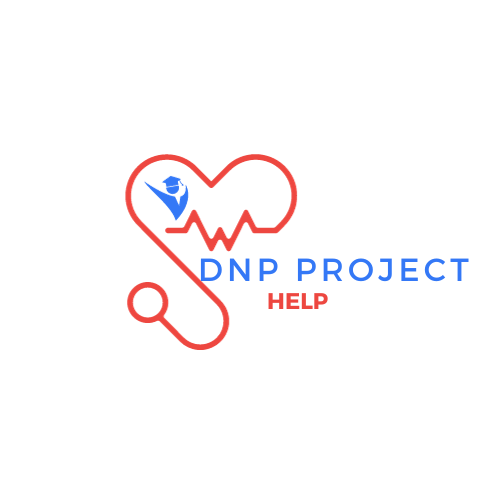
Complaint: “I’ve had intense stomach pain for the last two weeks.”
Present Illness:
Mrs. Rodriguez, a 48-year-old woman, arrived at the urgent-care clinic reporting intermittent and worsening pain in the upper right quadrant of her abdomen over the past two weeks. This pain has intensified notably in the last two days and extends to her right shoulder. Alongside the pain, she experiences symptoms like nausea, vomiting, and loss of appetite, all appearing in the last two days. Notably, she has experienced similar self-resolving symptoms intermittently over the past year. Her family history includes a mother with a history of biliary disease. Upon examination, Mrs. Rodriguez presents with a slight fever, mild yellowing of the eyes (scleral icterus), tenderness in the right upper quadrant of her abdomen with guarding, and a positive Murphy’s sign.
Onset: Two weeks ago, with symptoms intensifying significantly two days ago.
Location: Primarily in the right upper quadrant, occasionally radiating to the right shoulder.
Duration: The pain has been persistent since its onset this time, whereas in the past, it typically lasted only 1-2 days.
Character: Described as crampy, gnawing, and achy.
Aggravating/Alleviating Factors: Pain exacerbates with meals and remains unresolved despite attempts with antacids and NSAIDs.
Related Symptoms: Nausea, vomiting, and loss of appetite developed concurrently with the onset of symptoms two days ago. The patient denies recent exposure to individuals with illnesses but acknowledges experiencing similar symptoms previously.
Treatments: Over-the-counter antacids and ibuprofen have been attempted without relief.
Significance: The pain initially registers at a level of 2-3 on a scale but escalates to 6-7. Consequently, it has prevented the patient from attending work.
Primary Diagnosis:
Ascending Cholangitis
Ascending cholangitis can manifest as either acute or chronic. The gallbladder, a vital component of the gastrointestinal system, stores and releases bile to aid in fat digestion. However, gallstones can form and obstruct the organ, leading to symptoms such as abdominal pain, right shoulder pain, nausea, and vomiting, as seen in your case. Hospital admission is necessary due to indications from diagnostic tests suggesting a potential blockage in the duct, resulting in inflammation and infection. This condition typically requires inpatient management and may necessitate surgical intervention or further assessments like MRCP to evaluate the ducts. The recommended procedure, cholecystectomy, is commonly performed laparoscopically and carries some anesthesia-related risks. However, post-surgery, recurrence of gallstones is unlikely. Being overweight increases the risk of gallstone formation (Crowley & Martin, 2022).
Ascending cholangitis, the diagnosis for the patient, is characterized by jaundice, abdominal pain, and fever arising from biliary tract infection and stasis. Symptoms include fever, chills, malaise, rigor, generalized abdominal discomfort, pruritus, and pale stools (Chatterjee, Mavani, & Bhattacharyya, 2022). The patient reported symptoms of vomiting, nausea, stomach pain, and anorexia. With a family history of biliary disease, the patient is at increased risk of developing ascending cholangitis due to biliary tract infection, highlighting the significance of family history as a risk factor for this condition.
Alternative Diagnoses:
- Cholecystitis:
Cholecystitis presents an alternative diagnosis, characterized by the obstruction of the tube connecting the gallbladder to the small intestine due to stones. Symptoms include bloating and intense upper-right abdominal pain, with radiating pain to the right shoulder, as reported by the patient. Additional symptoms encompass nausea, fever, vomiting, abdominal tenderness, and severe abdominal pain spreading to the right shoulder or back (Chatterjee et al., 2022).
- Acute Pancreatitis:
Acute pancreatitis is another potential diagnosis, marked by temporary inflammation and enlargement of the pancreas. Symptoms typically include nausea, vomiting, fever, abdominal tenderness, abdominal pain radiating to the back, and a rapid pulse. The symptoms reported by the patient closely resemble those associated with acute pancreatitis.
- Peptic Ulcer Disease:
Peptic ulcer disease is the final alternative diagnosis, arising when stomach acid erodes the inner surface of the small intestine or stomach. Symptoms may include burning stomach pain, heartburn, nausea, bloating, and heartburn (Hatnoorkar & Rajpal, 2022). Given the patient’s presentation of stomach pain, nausea, and vomiting, peptic ulcers warrant consideration as a potential diagnosis.
Case Management Plan:
Pharmacologic Care:
- Initiate IV access.
- Obtain blood cultures x2.
- Administer 1g of Ertapenem IV.
- Refer to General Surgery for further assessment and management.
Supportive Care:
- Initiate NPO status.
- Administer a 100ml bolus of 0.9% IV normal saline, followed by 50 ml per hour infusion.
- Administer 3.375 g of Zosyn IV every 6 hours for 7 days.
- Administer Zofran 4mg IV every 6 hours as needed for nausea and vomiting.
- Monitor blood glucose every 4 hours to detect hypoglycemia due to NPO status.
Patient Education:
Provided education regarding the diagnosis and emphasized the necessity for ongoing evaluation in the emergency department due to fever and expected progression. Patient acknowledged understanding and had no further inquiries.
Follow-Up:
- Notify staff promptly if experiencing heightened pain, nausea, fever, dizziness, fatigue, or any other concerns while in the emergency department.
- Schedule a follow-up appointment at the clinic 1-2 weeks post-op discharge. If the gallbladder is removed, adhere to a low-fat diet and consume smaller meals. Avoid engaging in strenuous activities or heavy lifting. Take prescribed pain medication as directed.
- Contact a physician if pain is not effectively managed. In case of symptoms indicative of infection such as fever, chills, or bleeding, seek urgent care assistance promptly.
References
Chatterjee, S., Mavani, A., & Bhatttacharyya, J. (2022). Chemistry and mechanism of the
diseases caused by digestive disorders. In Nutrition and Functional Foods in Boosting
Digestion, Metabolism, and Immune Health (pp. 3-14). Academic Press.
Crowley, K., & Martin, K. A. (2022). Patient education: Gallstones (The Basics). UpToDate.
https://www.uptodate.com/contents/gallstones-the-basics?search=cholecystitis
%20diagnosis&topicRef=666&source=related link
Hatnoorkar, S. A., & Rajpal, C. (2022). Homoeopathy and Acid Peptic Disorder. Journal of
Medical and Pharmaceutical Innovation, 9(45).
I-human Case Study: Evaluating And Managing Genitourinary Or Gastrointestinal Conditions
Urinary frequency is a common genitourinary issue affecting adults of all ages. It can stem from various underlying systemic conditions such as diabetes, urinary tract infections, prostate enlargement, kidney infections, or prostate cancer. Many of these conditions carry significant implications, necessitating comprehensive patient evaluations. When assessing patients, thorough consideration of personal, medical, and family history is crucial before recommending specific physical examinations and diagnostic tests, as the benefits of these interventions must be carefully weighed against potential risks.
For this Case Study Assignment, you will examine an i-Human simulation case study featuring an adult patient with a gastrointestinal condition. Based on the patient’s information, you will formulate a range of potential diagnoses, explore treatment options, and devise an appropriate treatment plan tailored to the patient’s needs.
To Prepare:
- Familiarize yourself with this week’s Learning Resources, focusing on the assessment, diagnosis, and treatment of patients with gastrointestinal (GI) or genitourinary (GU) conditions.
- Access the i-Human platform using the provided link and review the assigned case study for this week. Consider the pertinent health history you would need to gather from the patient.
- Determine which physical examinations and diagnostic tests would be appropriate to further evaluate the patient’s condition. Reflect on how the results of these assessments would contribute to making an accurate diagnosis.
- Identify three to five potential conditions that could be included in the patient’s differential diagnosis based on the presented symptoms and findings.
- Consider any relevant clinical guidelines that may support the diagnosis you propose.
- Develop a comprehensive treatment plan for the patient, incorporating strategies for health promotion and patient education specifically tailored to individuals with GI or GU conditions.
Assignment: Interact with the assigned i-Human patient and complete the designated case study. Refer to the i-Human Graduate Programs Help link within the platform for guidance on using i-Human.
BY DAY 7:
- Complete the assigned case study in i-Human.
- Save the PDF of your completed assignment from i-Human.
- Upload your saved PDF to this assignment submission.
Submission Information:
Before submitting your final assignment, utilize Turnitin Drafts to check your draft for authenticity. Save your Assignment as WK7Assgn+last name+first initial. Initiate the submission process by clicking on Start Assignment near the top of the page. Select Upload File and proceed to submit your assignment for review.
Rubric
| Criteria | Ratings | Pts |
| HPI | ||
| – Proficient | 10 to >6.0 pts | 10 |
| Clearly written HPI statement with comprehensive information gathering from case questions. Includes important personal/family medical and social history. | ||
| – Competent | 6 to >3.0 pts | |
| Well written HPI statement but may be missing 1-2 key components from the history. Missing pertinent positives and negatives. Does not include all important personal/family medical and social history. | ||
| – Novice | 3 to >0 pts | |
| Poorly written HPI statement. Incomplete ideas and sentences. Lacks basic history taking skills. Missing pertinent positives and negatives. Missing important personal/family medical and social history. | ||
| Management Plan | ||
| – Proficient | 20 to >14.0 pts | 20 |
| Clearly written plan covering all critical components for patient’s final diagnosis. Follows current quarter management plan template. 3 scholarly references included Evita Alonso iHuman. | ||
| – Competent | 14 to >6.0 pts | |
| Well written plan but may be missing 1-2 key issues critical to patient’s diagnosis. Follows some of the current quarter management plan template. 2 scholarly references included. | ||
| – Novice | 6 to >0 pts | |
| Poorly written plan. May be missing 3 or more key issues that are critical to patient’s diagnosis. Does not follow current quarter management plan template. 0-1 scholarly references included. | ||
| Performance overview/total i-Human Score | ||
| – Proficient | 70 to >50.0 pts | 70 |
| Total i-Human performance score is missing 1-2 key elements in overall clinical work-up. History, physical exams, body system classification, differentials, rankings, tests, diagnosis and exercises. | ||
| – Competent | 50 to >30.0 pts | |
| Total i-Human performance score is missing some key elements in overall clinical work-up. History, physical exams, body system classification, differentials, rankings, tests, diagnosis and exercises. | ||
| – Novice | 30 to >0 pts | |
| Total i-Human performance score is missing many key elements in overall clinical work-up. History, physical exams, body system classification, differentials, rankings, tests, diagnosis and exercises. | ||
| Total Points: 100 Evita Alonso iHuman | 100 |
Must Read:


